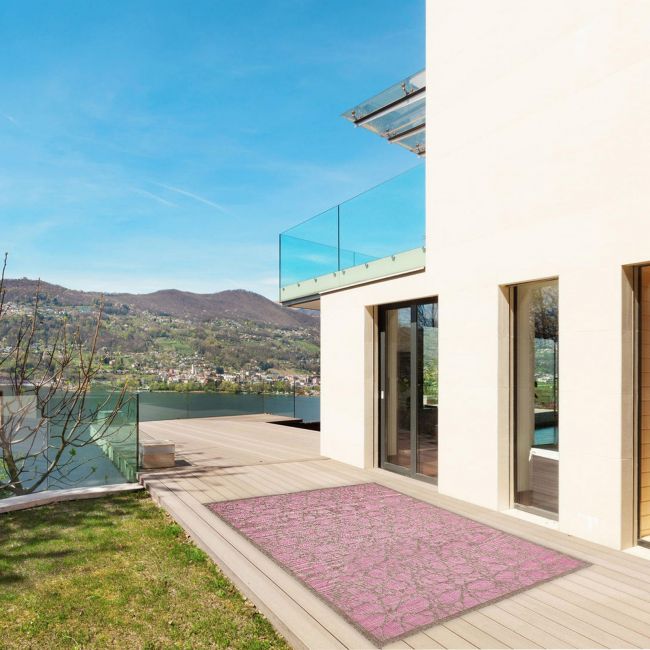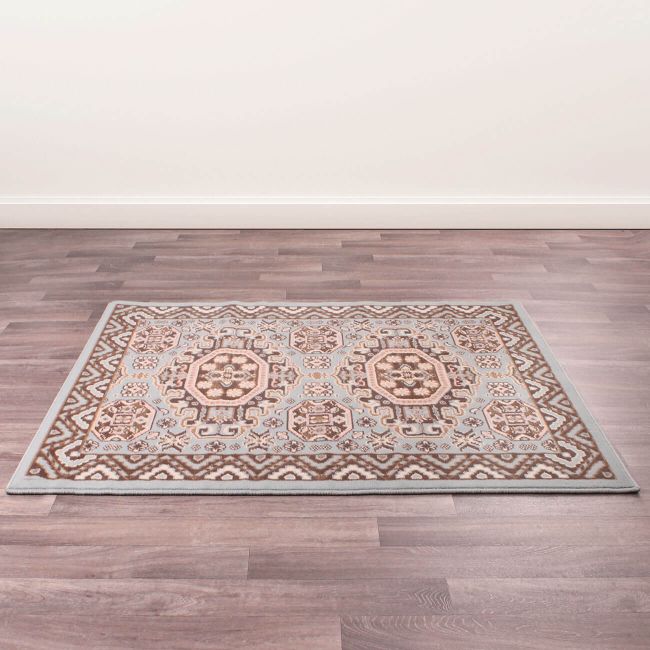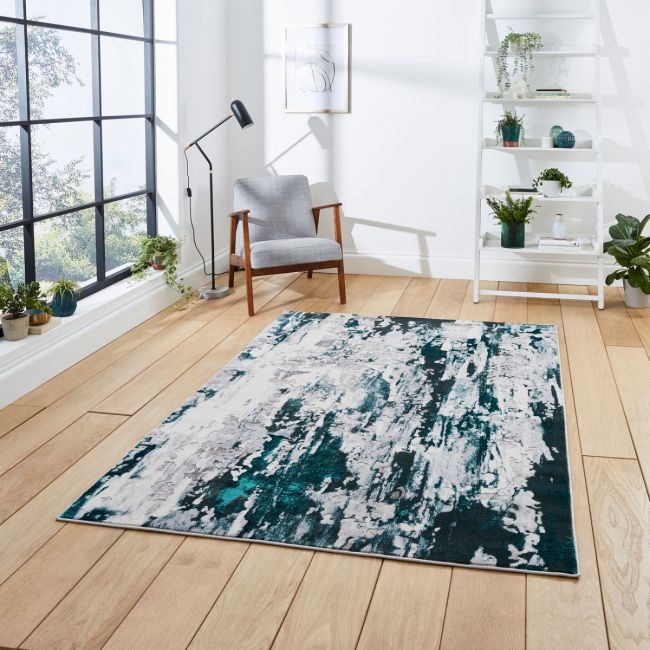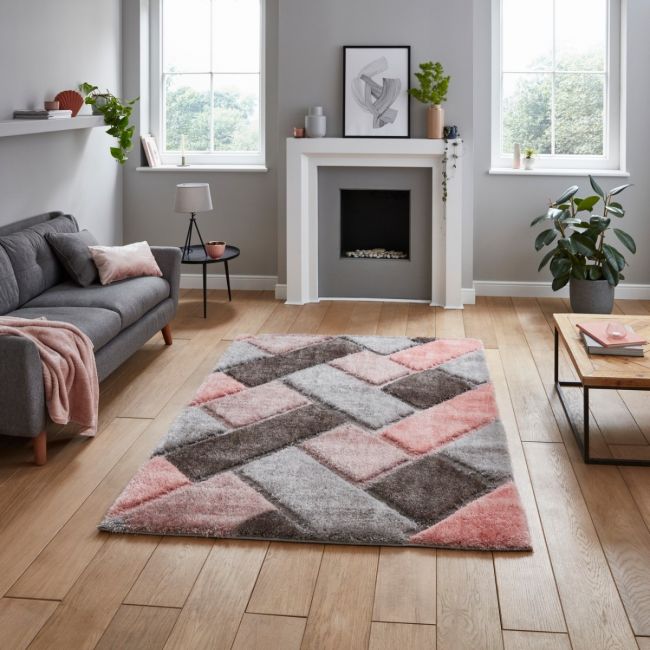Types Of Rug Pads And How To Choose The Right One
Rug pads are delicate underlays designed specifically to be placed beneath area rugs or "scatter rugs." They can also make the rug more cushy and soft. They protect the floor and the rug and prevent them from slipping. Rug pads also enhance the rug's capacity to insulate the room's heat and reduce noise.
Although there are numerous possibilities for rug pads, not all of them will be appropriate for all applications. It is advisable to get padding because rug pads have different characteristics from carpet padding. cushion made specifically for use under area rugs. To fit your rug, don't trim sections of the under-carpet
 Amitta Marble Luxury Viscose rugs in Slate Grey by Designer William Yeoward
Amitta Marble Luxury Viscose rugs in Slate Grey by Designer William Yeoward
What To Consider When Choosing A Rug Pad
Despite being frequently disregarded, an area rug pad offers several advantages. When selecting a material for your area rug, prioritize these many factors and keep in mind that each sort of material has advantages of its own.
-
Safety- One of the main purposes of a rug pad is to prevent rugs from slipping on flooring. This is particularly crucial for smaller rugs such as circle rugs and those that are placed in halls and entryways like a modern runner
-
Comfort- An area rug pad placed underneath it creates a thicker, cozier floor covering. This may be crucial in high-traffic areas, as well as in play areas and recreation spaces.
-
Soundproofing- A rug pad helps reduce noise in a space.
-
Environmental Impact- While some rug pad materials are synthetic and may outgas trace levels of chemicals, others are comprised of recycled or 100 percent natural materials.
-
Protection of floor and rug- To promote airflow between the rug and the floor, certain rug pads feature an open weave pattern. Controlling humidity, which may harm the carpeting or hardwood flooring, might be a key factor.

Check With The Flooring Manufacturer
Check the manufacturer's guidelines before choosing your rug pad. Some materials used in rug pads might not be advised for use on specific types of flooring because they could harm your floor.
A PVC (polyvinyl chloride) rug pad, for instance, has the potential to stain hardwood finishes and vinyl flooring. Even laminate flooring, which is frequently regarded as "untouchable," is not always protected from harm from insufficient padding. Never use any kind of product or substance that has not been advised by the manufacturer, and always check your floor's warranty to see if certain materials are specifically forbidden.
Types Of Rugs Pad
- Felt
Rug pads made entirely of felt are often woven from recycled natural and synthetic fibers to create a reasonably thick and plush pad at a reasonable cost. Wool, cotton, polyester, nylon, and other types of fibers may be found in felt pads. These strands are all visible in the woven pad, which is typically greyish.
- Natural Rubber
Natural rubber is one of the most popular rug pad materials, along with felt. Natural rubber rug mats typically have a waffle- or mesh-like texture and are beige or whitish. They are made from rubber trees, are fully natural, and don't outgas any dangerous chemicals. On hard, slippery floor surfaces, they provide very good non-slip qualities and are perfect for tiny rugs and gateway carpets. Additionally, because they are moisture-resistant, they work well in restrooms and other damp environments.
- Hybrid
Manufacturers frequently blend felt and natural rubber to produce hybrid pads. The pad is non-slip thanks to the thin rubber layer at the bottom, while the thicker upper felt layer provides excellent cushioning for the rug underneath. On a hard flooring surface, they are a fantastic option for any size rug. To avoid leaving residue on the floor, make sure the bottom layer is genuine rubber rather than latex or polyurethane.
- Latex
Latex, a synthetic rubber created by humans, is frequently used to make cheap rug pads. While latex provides many of the same benefits as rubber, such as superior grip and cushion, they frequently contain filler materials like clay, which can eventually leave a sticky, difficult-to-clean residue on the floor. However, latex pads are water-resistant, making them an ideal option for outdoor spaces, baths, and kitchens.
- Memory Foam
This substance is a resilient and excellently cushioned synthetic foam. The same substance is now widely used in pillows and mattresses. It performs admirably as a rug pad, providing a great cushion, good sound-deadening, and thermal insulating qualities, and a long lifespan. If you don't choose one with a non-slip coating, it may occasionally slide on hard, polished flooring.
- Polyester
A polyester rug pad might be an excellent option for places with a lot of wetness. Additionally, it works well outdoors and in environments where pet stains are common. These mats are made with visible strands and resemble very tiny felt pads. Polyester is created from petroleum-derived chemicals, like other synthetic floor pads, which can harm polyurethane floor coatings.
To view BeddingMill's full range of rugs and runners, please click below:
Also, if you are looking for good options for artificial grass and vinyl flooring, please click below to visit:








